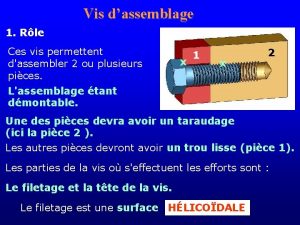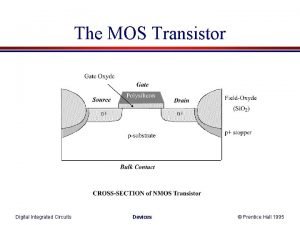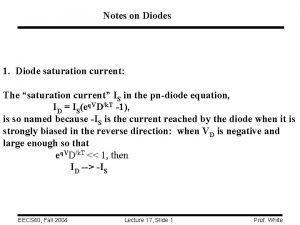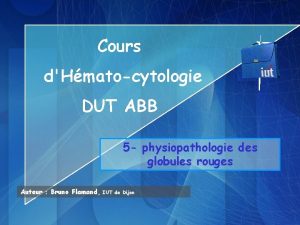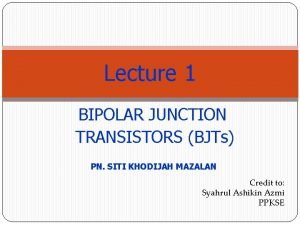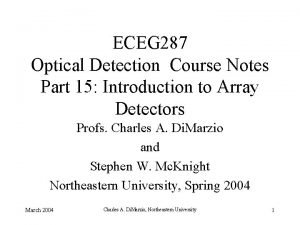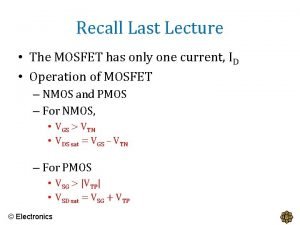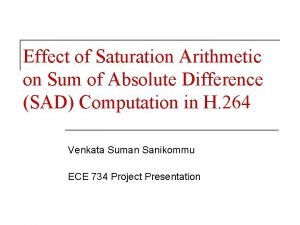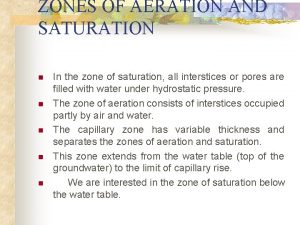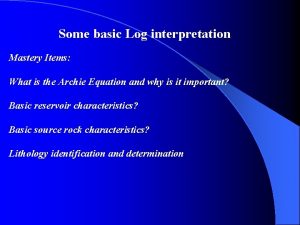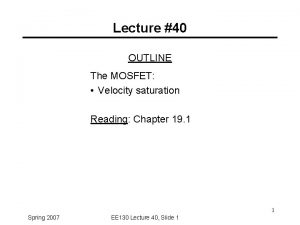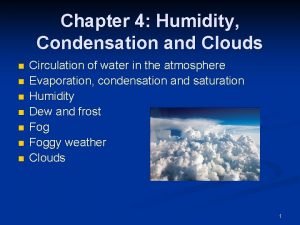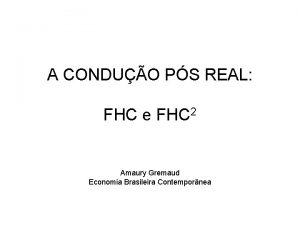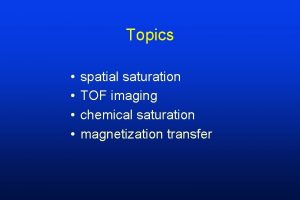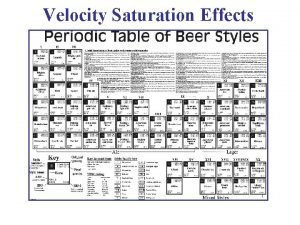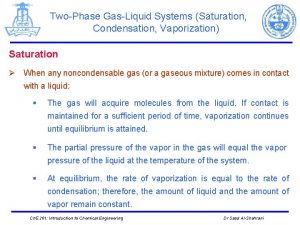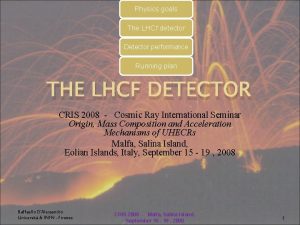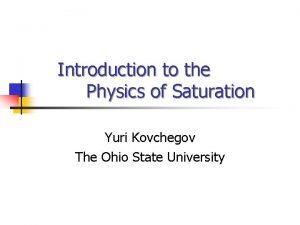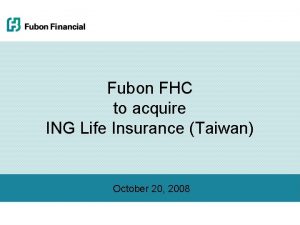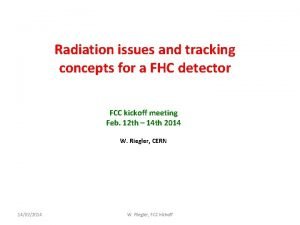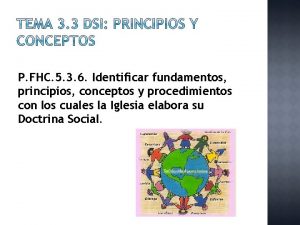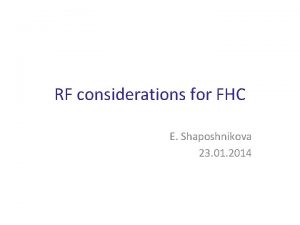Saturation physics with an ALICElike detector at FHC





















- Slides: 21

Saturation physics with an ALICE-like detector at FHC Some numbers and ideas – a discussion-starter Marco van Leeuwen, Nikhef

Observables for gluon density This talk: focus on saturation of gluon density Observables that are sensitive to the gluon density: • Direct gamma – LO: qg → gq • Drell-Yan – NLO: qg → l+l- q (tiny xsec) • J/y – LO: gg → cc – Kinematics uncertain; hadronisation likely plays a role • Di-jet/di-hadron production – No parton selectivity; gg → gg/qq dominates at ‘low’ p. T 2

ALICE central barrel capabilities ITS upgrade under way: Improved granularity, pointing resolution Tracking + PID over |h|<0. 9, full azimuth Designed for d. N/dh < 8000 Tracking p. T < 100 Ge. V/c (current state; may improve; limited by B field, fake rates) 3

ALICE forward capabilities: muon arm Muon arm: 2. 5 < h < 4. 0 Focus on quarkonia (J/y, y’, ) Upgrade: MFT for HF secondary vertices + y’ 4

A Forward Calorimeter: FOCAL (under discussion in ALICE) 3. 2 < h < 5. 3 Fo. Cal-H Fo. Cal-E FOCAL: High-granularity EMCAL for p 0, g at forward rapidity HCal for isolation, jets 5

2 -body kinematics; some numbers For gluon density, need Q 2 and x 2: Final state parton p. T ~ Q h of final state partons Photon is a parton Di-hadron, g-hadron: additional constraint on x 6

Some numbers For example: p. T=5 Ge. V y=0 √s = 14 Te. V x ≈ 3. 5 10 -4 √s = 100 Te. V x ≈ 5 10 -5 y=4 x ≈ 6. 5 10 -6 y=4 y=0 x ≈ 9. 1 10 -7 Lower x range by factor ~7 ~ e-2 y = 0 at FHC is y = -2 at LHC (14 Te. V) 7

p 0 production, g/p ratio g/p worse than at 7 Te. V, but not dramatic ~factor 10 increase of p 0 production at 50 Ge. V Less at lower p. T 8

Di-hadron correlations I Minimum Bias Central Motivation: CGC: no 2 -2 scattering: multi-gluon recoil Also: di-hadron constrains x range associated trigger Observation at RHIC: recoil yield broadened, suppressed Only in central events h=3, p. T = 1 -2 Ge. V h=0 at LHC should be equivalent 9

Di-hadron correlations II ALICE Phys Lett B 719, 29 At LHC: enhancement of per-trigger yield Opposite of expectations from RHIC! Speculation: can this be seen in 100 Te. V pp collisions (high mult? ) 10

Experimental considerations forward measurements Larger energy: larger ybeam; go to even larger y? 14 Te. V: ybeam = 9. 61 100 Te. V: ybeam = 11. 6 • Experimental challenges: – Large energy/p. T • Special mag fields for tracking • Less problematic for calorimeters (angle) – Large particle density • Mostly challenging for calorimeters – Small angle: • Need conical beam pipe for y >~ 5. 5 • y=5. 3 is 1 cm/m, factor 100: beam pipe 1 mm path length 10 cm ! h = 4 -5 is a practical limit; If we want to go higher; need good motivation+preparation 11

Multiplicity in Pb. Pb d. N/dh/0. 5/Npart = 16 -18 √s. NN = 40 Te. V 2 -2. 5 times 5. 5 Te. V Still within ALICE tracking specs 12

Summary • ALICE central barrel tracking: – |h| < 0. 9 includes PID, p. T < 100 Ge. V – Can probably handle Pb. Pb @ 40 Te. V • Forward 1: Muon arm – quarkonia+open heavy flavour – 2. 5 < h < 4 • Foward 2: FOCAL (under discussion) – g + p 0 (jets, J/y → e+e-) – 3. 2 < h < 5. 3 With FHC, reach x ~ 10 -6 at y=4 13

Extra slides 14

Reminder: how to probe gluon density Deep-Inelastic Scattering (DIS) Classical PDF method Not sensitive to gluons at LO Gluons from NLO/evolution Photon production in hadronic collisions: Sensitive to gluons at LO Directly related to DIS: real instead of virtual photon 15

Virtual photon production: Drell-Yan only sensitive to gluons at NLO DY: small cross section 16

x ranges; 2 2 kinematics For gluon density, need Q 2 and x 2: Final state parton p. T ~ Q h of final state partons Photon is a parton 17

x sensitivity pion vs gamma PYTHIA simulations Forward g much more selective than p 0 g-p 0 correlations provide additional constraints Pythia = LO + radiation NLO effects under study – expect small effect for isolated photons 18

LHC vs RHIC LHC: x~10 -4 – 10 -5 accessible, with p. T~Q~3 -4 Ge. V 19

x ranges for p+A C. Salgado (ed) et al, ar. Xiv: 1105. 3919 20

p 0 -p 0 correlations: x sensitivity p 0 -p 0 correlations more selective (select both p 0 to be forward) However: still a long tail to large x From fragmentation+underlying event 21
 Pessoas vis
Pessoas vis Fhc food handler classes
Fhc food handler classes Microelectrode techniques
Microelectrode techniques Current components in bjt
Current components in bjt Mos transistor
Mos transistor Saturation current
Saturation current Globule rouge
Globule rouge Saturation flow rate
Saturation flow rate Large signal equivalent circuit bjt
Large signal equivalent circuit bjt Saturation region of bjt
Saturation region of bjt Saturation range
Saturation range Pmos saturation current equation
Pmos saturation current equation Absolute saturation
Absolute saturation What is the zone of aeration
What is the zone of aeration Task saturation
Task saturation Ece
Ece Zone of aeration and zone of saturation
Zone of aeration and zone of saturation Sxo saturation
Sxo saturation Vdssat
Vdssat High saturation
High saturation Relativ humidity
Relativ humidity Convenience sampling adalah
Convenience sampling adalah
